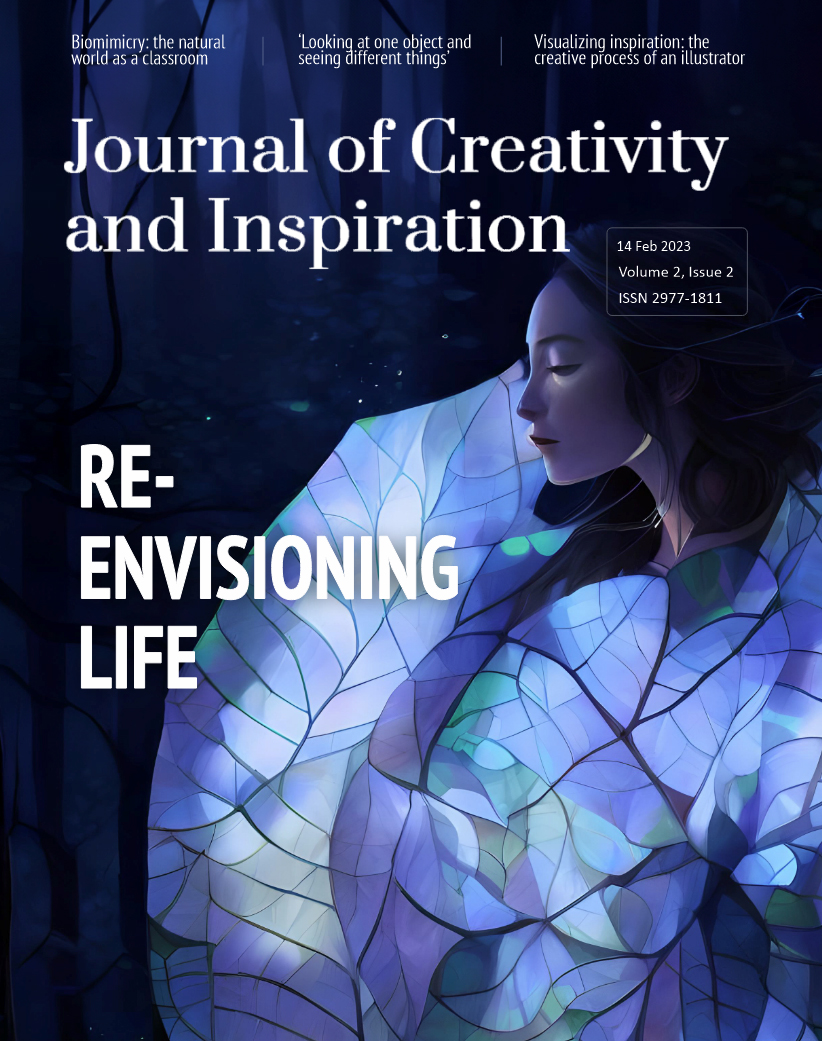Greeted by potholes that need healing: Ememem Interviewed by Gil Dekel
14 February 2024 – Vol 2, Issue 2.
Gil: You are repairing and transforming urban imperfections, like potholes, in a process you call ‘flacking’. Can you share the moment that inspired you to start flacking?
Ememem: Flacking is the result of a series of experiences that have taken place over many years. It started in Lyon, France, in 2012. I was searching for new artistic expressions, but nothing really excited me. One day I healed some cuts in the bitumen in my studio, and decided to add some ceramic scraps to the floor and wall. This was my first flacking. I looked at it for a few days until I realised what I had created… It made perfect sense, and opened a new creative path. That was the beginning of my obsession. I knew then that I will spend the rest of my life expressing myself repairing holes and broken things.
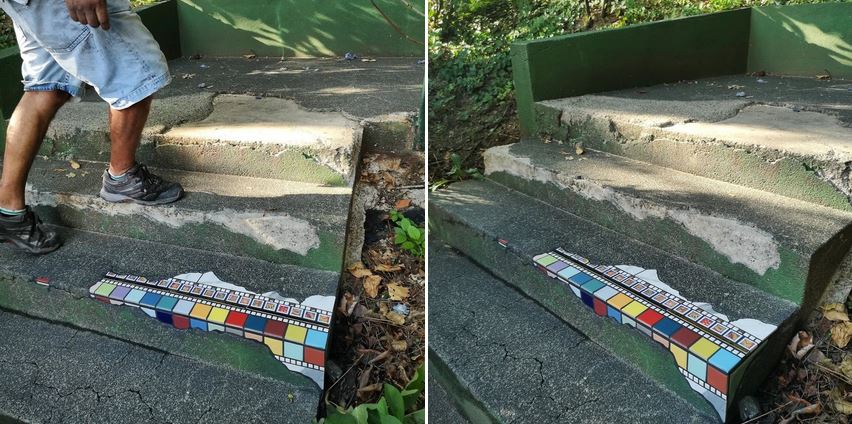
Zagreb, Croatia, 2023. © Ememem.
Gil: What goes into your creative process?
Ememem: The entire creative process is imbued with a poetic desire. It is an action of creating that aims to transform locations into what I feel are ‘poetic spaces’. Flacking is an expression of love, a free and low-tech repair process that transforms the wounds of the streets into unique and intimate works of art. Each pothole has its own story of injury and resilience, and so each story makes sense in its own space-time context.
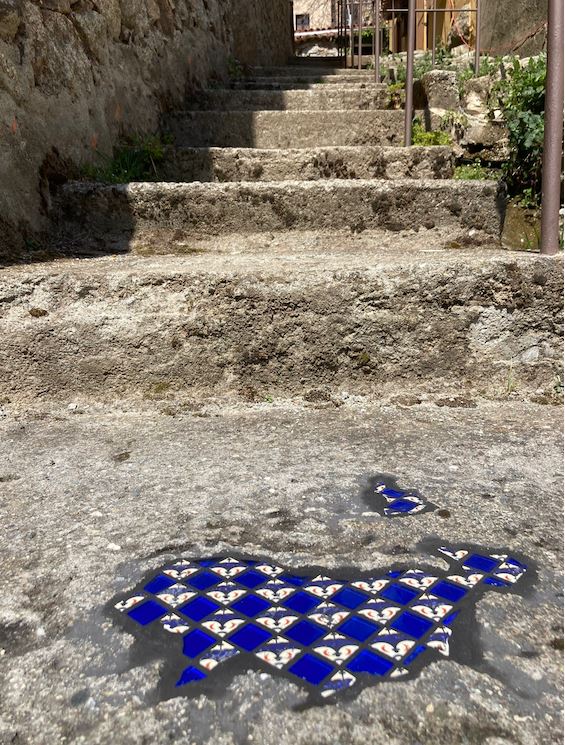
Corsica, France, April 2023. © Ememem.
Gil: How do you choose the locations?
Ememem: Some locations have a certain vibe that I can feel, and others do not. The streets themselves also vibrate with an artistic creative energy, but not all streets do… So, honestly, I still haven’t understood whether it’s me who chooses or whether it’s the places that choose me. Maybe it is a little of both.
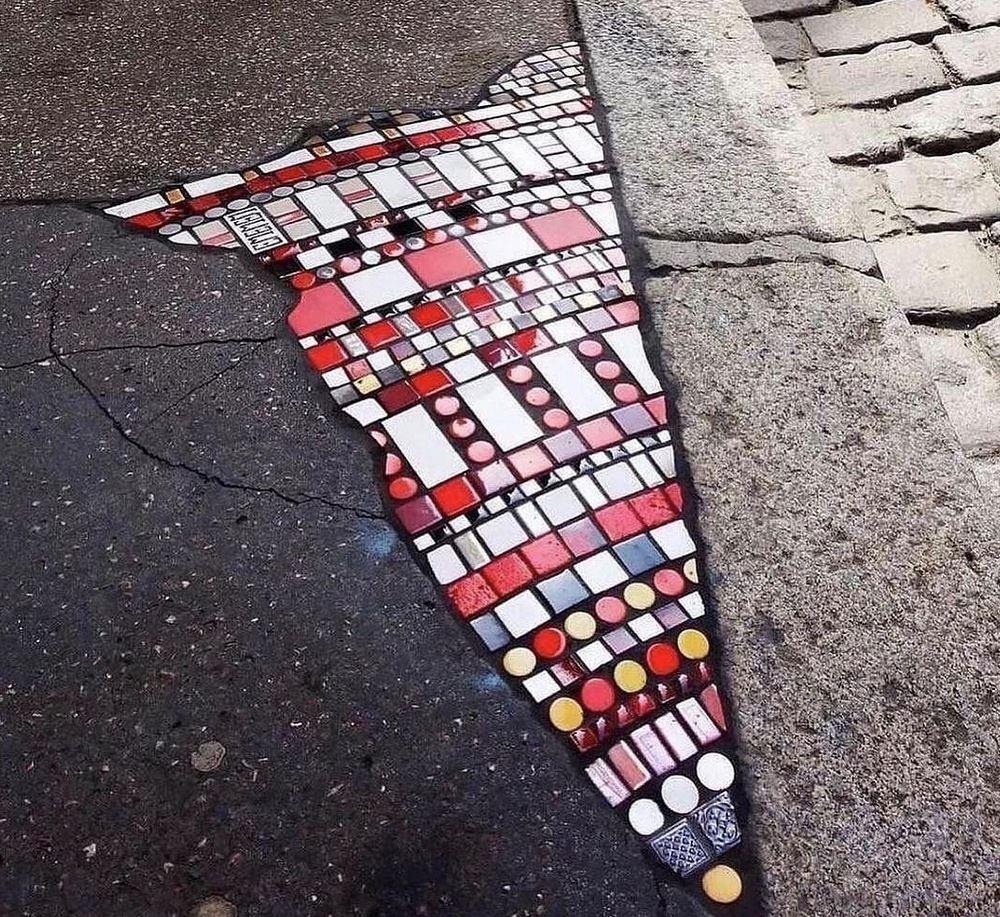
Lyon, France, 2020. © Ememem.
Gil: How has the local community responded to your work?
Ememem: I believe that Lyon has reacted positively to my work, as many people are interested in flacking. I am also booked to collaborate with the Lyon city Council this year on a new project.
Flacking can transform the way of seeing the city, of seeing a street, a neighbourhood. Those who know the work I have created tend to pay more attention to the road. They notice the potholes with the arts, and start to imagine flacking opportunities for other potholes in the city. The roads become more intimate, more personal, providing a poetic experience to the pedestrians. A place to experience, more than just a street to walk past.
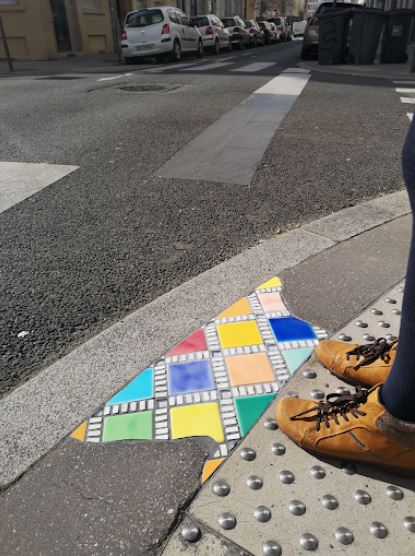
Lyon, France, 2022. © Ememem.
Gil: The concept of ‘flacking’ has gained momentum globally since 2016. How does it feel to see your art form resonate with people around the world?
Ememem: Everything went incredibly fast. The Internet has propelled flacking beyond my wildest dreams. It’s incredible to be able to share something that comes from great solitude with so many people. It became a shared narrative of street healing…
Gil: What other forms of arts or professions influence you?
Ememem: Everything influences me; any human activity influences me. We are all influenced under constant pressure, in a conscious and unconscious manner. Especially in this modern era.
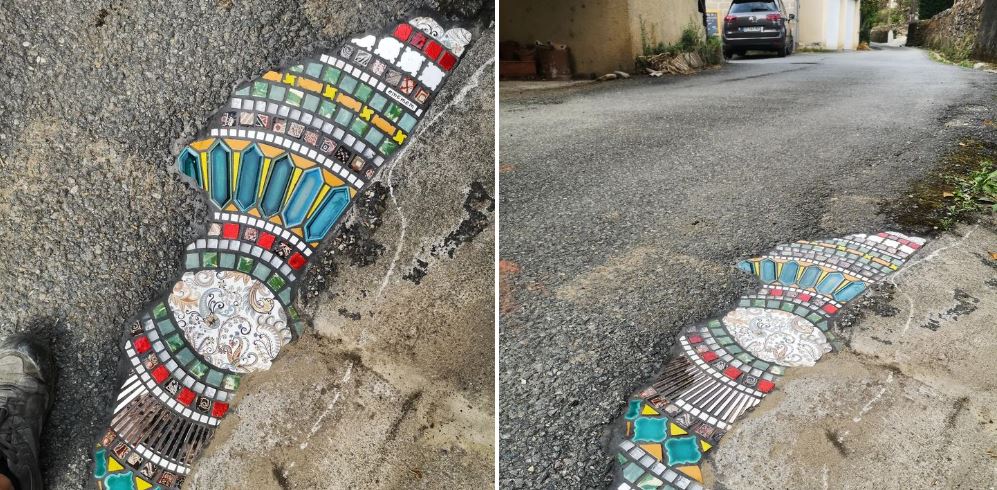
Compostella, South France, 2023. © Ememem.
Gil: One must make a comparison between your work and ancient mosaics (such as Roman mosaics).
Ememem: Yes. My work is strongly connected to ancient art. There are aesthetic and also technical similarities. But the context is different and therefore the meaning is different. The reasons are different.
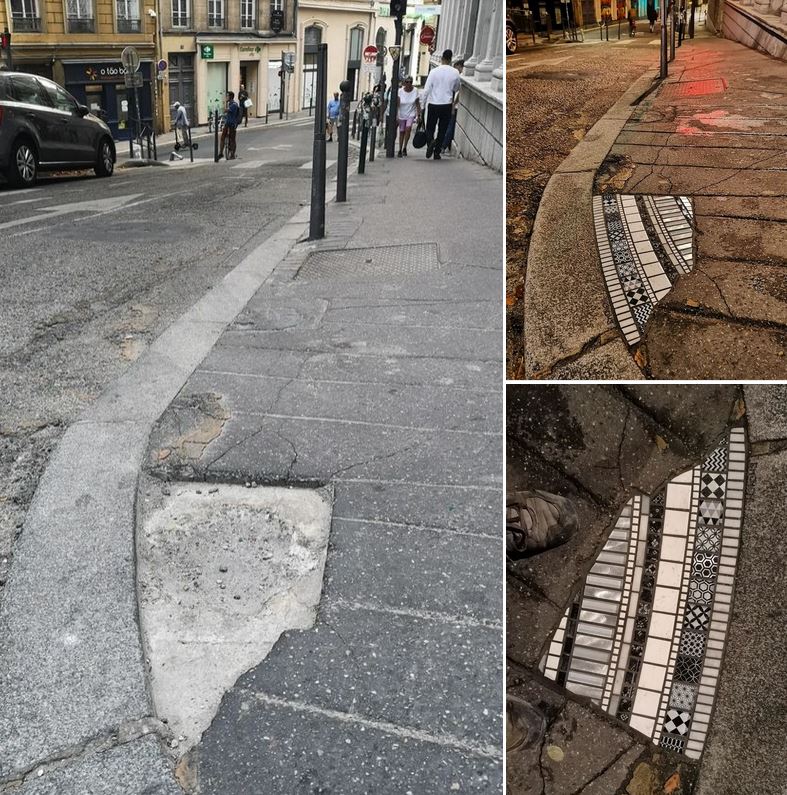
Lyon, France, 2023. © Ememem.
Gil: Has your style evolved?
Ememem: Yes, it is constantly evolving, but I always retrace my steps. I would like to create currents within the current. Fortunately, creation is still a long process. There are still many things to do in order to leave a complete or partially completed alphabet.
Gil: Your work seems to resonate with philosophical concepts like wabi-sabi (accepting imperfection) or Kintsugi (celebrating imperfect or broken things).
Ememem: Yes. I think that flacking indeed touches on these philosophical concepts. The main concept in wabi-sabi, Kintsugi, as well as flacking, is resilience.
But flacking is not just about resilience; it is also a work on memory.
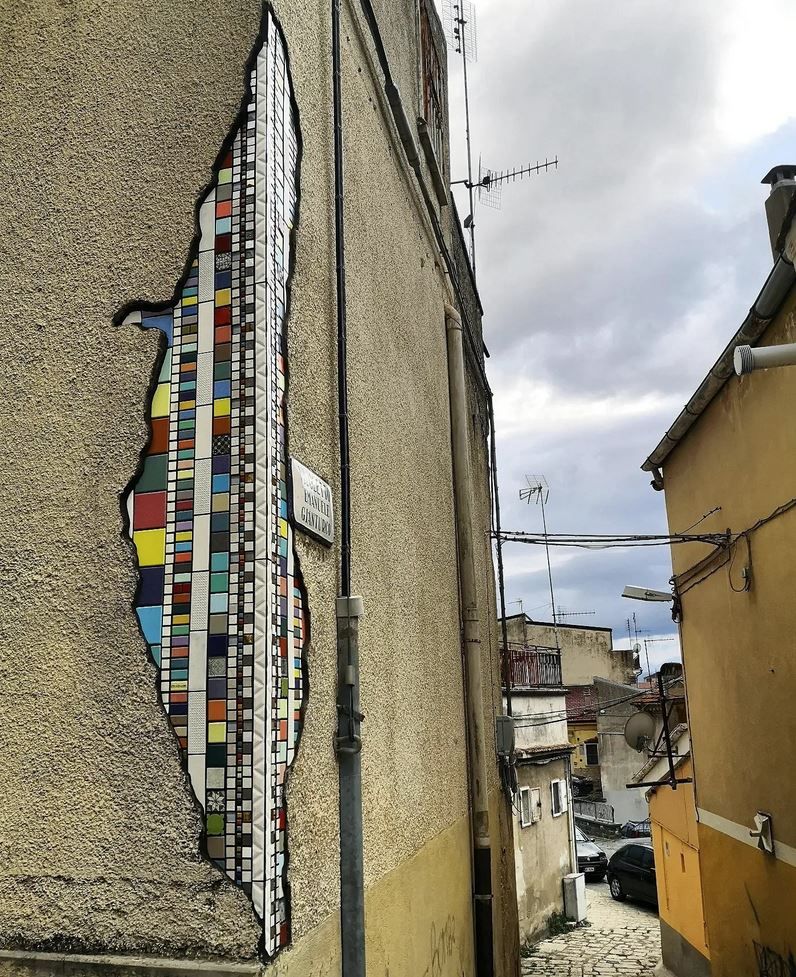
Rionero, Italy, 2023. © Ememem.
Gil: The decision to remain anonymous relates initially to the legality of working in public spaces. But, does anonymity impact your artistic expression in other ways?
Ememem: Anonymity allows me to be anyone, and to be able to imagine and observe from different personalities or perspectives. I can imagine a thousand colours or a sparkling horizon. I choose my perspective, and anonymity allows me to do so.
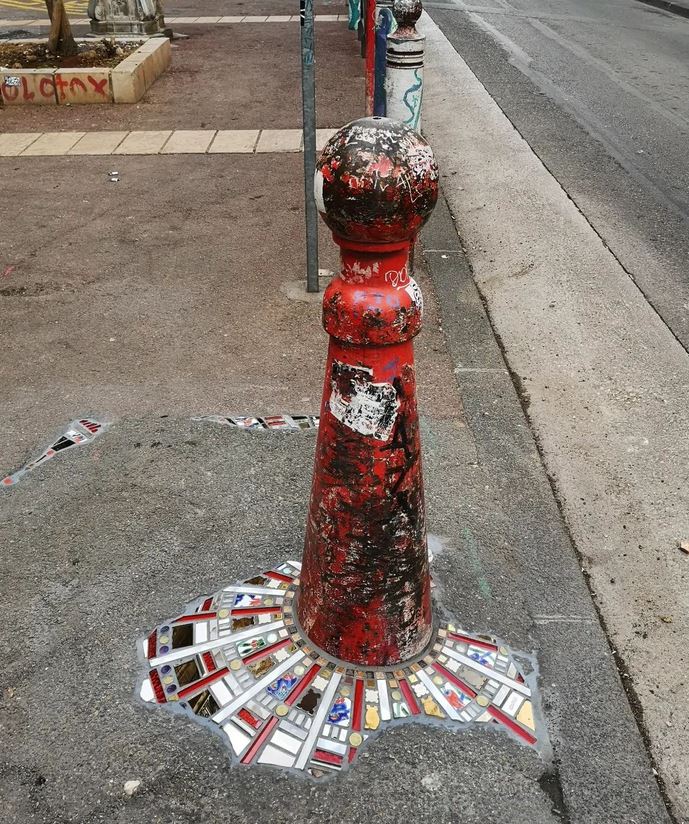
Marseille, France, 2022. © Ememem.
Gil: What is the difference between working horizontally (on flat pavements) versus working vertically (on walls)?
Ememem: On a technical level, the vertical is more difficult, as gravity is an additional element that must be managed. On an artistic level, there are many similarities, but also many differences – the support changes and so the way in which the work is displayed is very different. In horizontal flacking the work is more intimate, more discreet, it does not want to impose itself, but wants to be found.
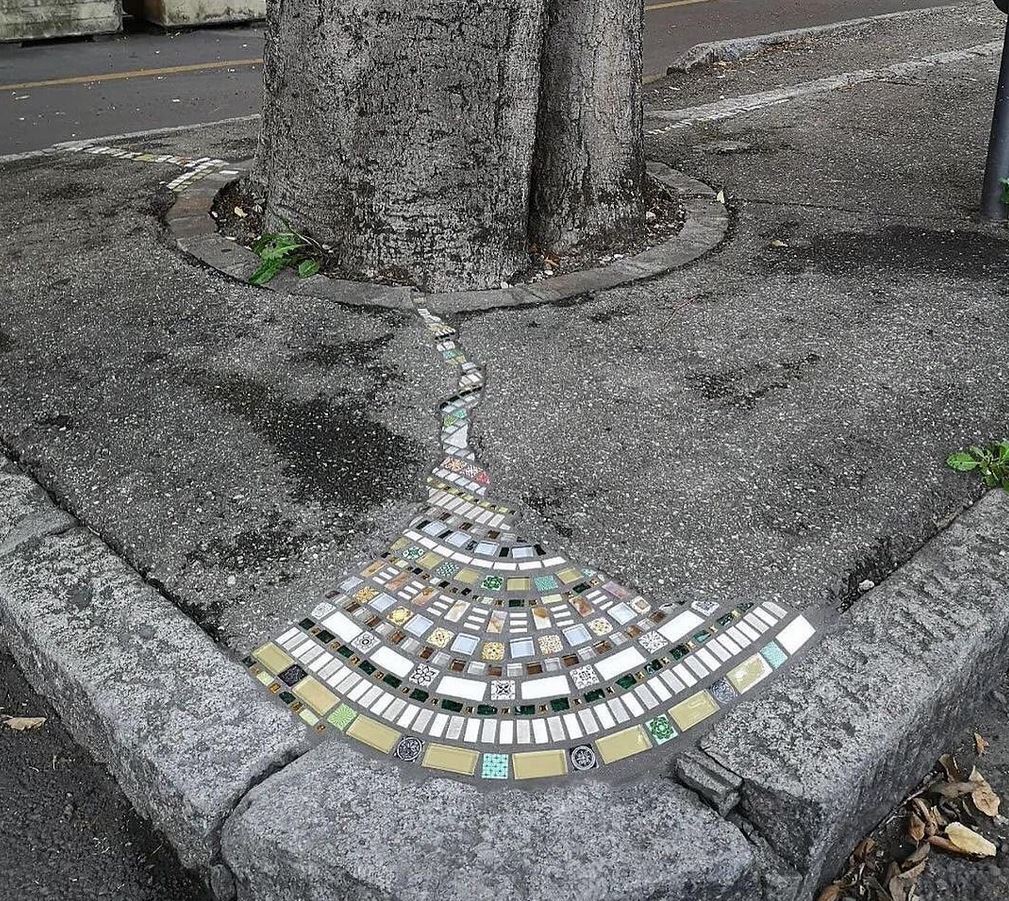
Modena, Italy, 2022. © Ememem.
Gil: How do you choose the colours and designs for each artwork?
Ememem: My choices are conditioned by various factors, for example, the materials. All my creations are made with recycled materials that come from different sources. I use waste, ceramics and mosaics that are destined for landfill. This limits the process as you have specific materials available at the time I create. This limit is also my freedom. It’s much easier to get lost in an infinite number of possibilities. I do not want to get lost, but try to adapt to the limitations in front of me.
Another parameter is the context. Each work is tailor-made and created exclusively for a well-defined context and place that can never be in another place. It is very specific. Other technical factors can influence me, such as the complexity of the work or the implementation time.
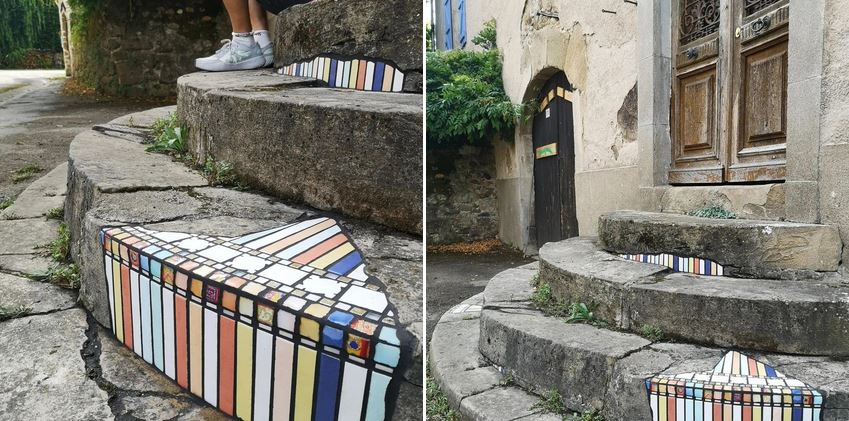
Decazeville, France, 2023. © Ememem.
Gil: What are your aspirations for the future of ‘flacking’?
Ememem: I will continue to work around the world, wherever I can go. I will continue to experiment with this technique in all the different ways and contexts that arise. I want to seek its limits and understand its multiple transformations. But I also have other projects that revolve around flacking. Right now, I’m in the United States creating a sculpture for a public park and soon some Flacking will appear in Chicago and New York… Soon, I will realise another beautiful project for a monumental sculpture in Paris.
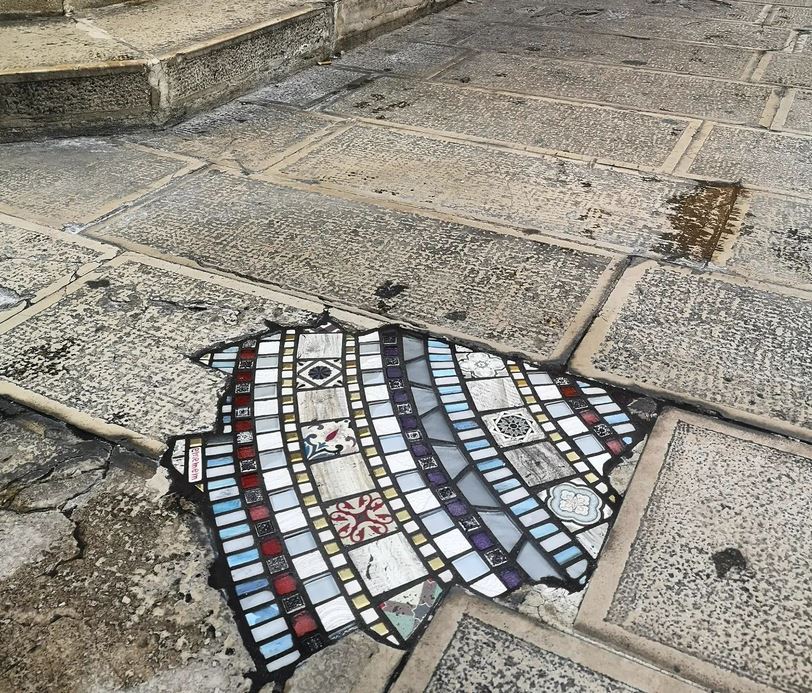
Rionero, Italy, 2023. © Ememem.
© Journal of Creativity and Inspiration.
Images copyright as specified.
Ememem is a French artist specialising in ‘flacking’, the repair and transformation of urban imperfections like pothole. As a so-called ‘pavement surgeon’ he applies ‘vandalistic love’ to repair and elevate the scars and wounds of cities.
Gil Dekel is a doctor in Art, Design and Media, specializing in processes of creativity and inspiration. He is a University lecturer, visionary artist, Reiki Master/Teacher, and co-author of the ‘Energy Book’.
